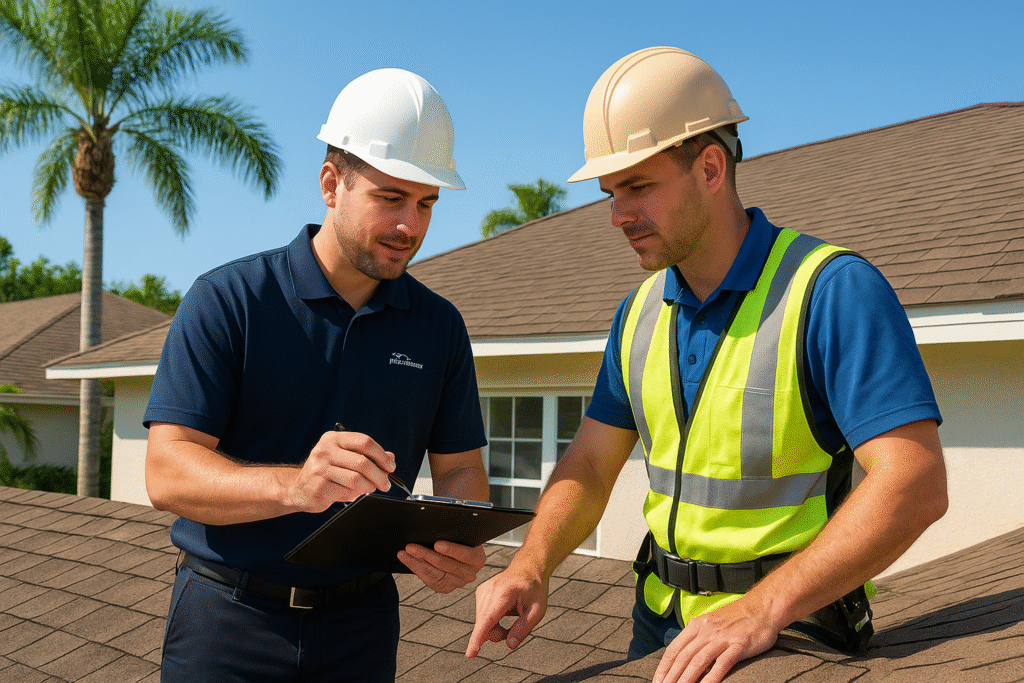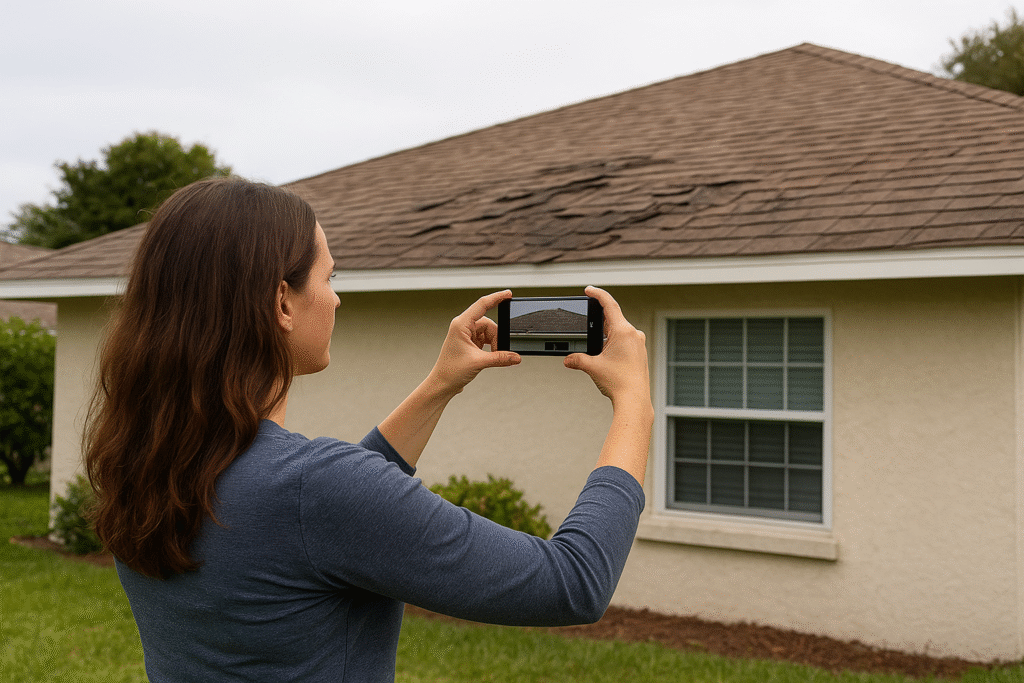The Insurance Inspection Process Explained
October 30,2025

When hurricane season approaches or severe weather strikes your South Florida home, understanding the insurance roof inspection process can mean the difference between a smooth claims process and months of frustration. Whether you’re dealing with wind damage from a recent storm or preparing for your first roof inspection for insurance purposes, every homeowner should know what to expect and how to prepare. This is where we come in.
What Triggers an Insurance Roof Inspection?
Your insurance company will order a roof inspection for insurance purposes in several specific situations. Knowing these triggers helps you prepare and understand when to expect an inspection.
Storm damage is the most common cause. After hurricanes, hailstorms, or high winds, you’ll usually file an insurance claim once damage appears. In Florida, this happens most often during hurricane season, when strong winds can lift shingles or cause debris impacts. Age is another factor. Most insurers require inspections once your roof is between fifteen and twenty years old. Florida’s intense heat, humidity, and salt air make roofs age faster, so insurers want proof that your roof is still safe.
Additionally, if you apply for a new policy or switch carriers, the insurer may inspect within the first two months to confirm your roof’s condition.
Stay ahead of the process. Don’t wait for your insurer. Request your own inspection after major storms or once your roof reaches 12 years old.
What Are the 4 Stages of the Roof Insurance Claim Process?
Understanding the roof insurance claim process helps you navigate your inspection request efficiently and avoid unnecessary delays.
Stage 1: Initial Claim Filing and Documentation

Your claim begins the moment you notice roof damage and you contact your insurer. You’ll receive a claim number and be assigned an adjuster.
Document early and often. Date-stamped photos and weather data can make or break your claim if questions arise later.
Take clear photos of the damage from the ground. Capture wide shots of the roof and close-ups of problem areas. Save local weather reports from the day of the storm. These records strengthen your insurance claim and prove when the event occurred.
Stage 2: The Professional Insurance Roof Inspection
This is the heart of the process. After your claim is filed, your insurer sends an adjuster to perform the insurance roof inspection. This usually happens within a few weeks, depending on claim volume.
During this visit, the adjuster checks every part of your roof’s structure and condition. They evaluate both visible and hidden signs of damage, focusing on how storm impact or wear affects your roof’s integrity.
Here’s what typically happens during the inspection:
- Exterior review: The adjuster examines shingles, tiles, flashing, gutters, and vents for storm or wind damage.
- Interior check: They inspect your attic and ceilings for leaks, water stains, or insulation issues.
- Photo documentation: Every issue is photographed and logged for the official report.
- Measurement and scope: They take detailed measurements to calculate repair or replacement costs.
- Contractor collaboration: You may invite your own licensed roofing contractor to attend. This ensures all damage is noted and fairly represented in the report.
Once the inspection is complete, the adjuster’s findings are submitted to your insurer for review and claim decision. Most standard claims move from filing to inspection report in three to six weeks, though heavy storm seasons can extend that.
Stage 3: Claim Review and Settlement Determination
The insurance company reviews the adjuster’s report and decides what will be covered. You’ll receive a written summary showing covered repairs, exclusions, and the payout amount minus your deductible.
If anything seems missing or undervalued, you can ask for clarification or a re-inspection. Having your own inspection report from a roofing expert makes it easier to appeal decisions and support your claim.
Stage 4: Roof Repair and Final Settlement
Once your claim is approved, you can choose any licensed roofing contractor. Your insurer cannot force you to use their preferred vendor. After repairs are complete, the insurer may inspect again to confirm the work meets their standards. Once approved, you’ll receive the final payment, including any withheld depreciation.
Keep everything. Save contracts, receipts, and photos from start to finish. They help during renewals or future claims.
How Do Roof Inspectors Perform Their Evaluations?
While homeowners shouldn’t attempt detailed roof inspections themselves due to safety concerns, understanding what professionals examine helps you identify potential issues and communicate effectively with inspectors.
Usually, professional inspectors check both the exterior and interior of your home. On the outside, they look for cracked, curled, or missing shingles, worn tiles, and signs of storm impact. Inside, they inspect ceilings and attics for leaks, stains, or mold.

Their findings determine whether the damage is from a storm, age, or maintenance issues—all key factors in your insurance roof inspection outcome.
What are the Common Types of Roof Inspections?
Different situations call for different types of inspections, each with distinct purposes, costs, and outcomes. Understanding the differences helps you know what to expect and ensures you’re getting the right type of inspection.
| Inspection Type | Purpose | Who Pays | Timeline |
| Insurance Claim Inspection | Evaluate storm damage for claim settlement | Insurance company | Within a few weeks of filing |
| Underwriting Inspection | Confirm roof condition for new or renewed policy | Insurance company | Within 30–60 days |
| Maintenance Inspection | Identify small issues early | Homeowner | As needed |
| Roof Certification | Estimate remaining lifespan for insurance | Homeowner | When requested |
| Wind Mitigation Inspection | Verify wind-resistant features for discounts | Homeowner | During policy setup |
Get Expert Help
When your roof is damaged or aging, you shouldn’t face the roof inspection claim process alone. FoxHaven Roof guides South Florida homeowners through every stage of the insurance roof inspection, from documentation to final repairs.
Our team of licensed professionals understand how insurers work, and how to protect your home and coverage. Contact FoxHaven Roofing today to schedule your professional inspection and get expert support through the entire insurance claim process..
